|
Learning
Turner Syndrome impacts development and is characterized by a variety of physical implications and learning issues which can include deficits in visuospatial organization, social cognition and math abilities. While some are diagnosed at birth or prenatally, over one third of girls with TS are diagnosed in mid-childhood and adolescence. Early diagnosis and treatment are vital to successful outcomes for girls with TS.
It is essential that educators be knowledgeable about the condition and prepared to consult with school nursing staff for possible referral for diagnosis and clinical oversight. It is equally essential that educators be informed about the cognitive issues likely to have an impact in the classroom and be prepared to collaborate with school psychologists to maximize educational outcomes.
Lastly, it is crucial that school nurses and school psychologists have current information about TS and be aware of the potential impact that TS has in their respective fields.
Useful books & resources available for purchase:
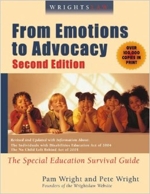 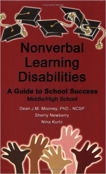 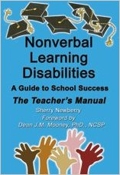 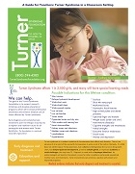
INSIGHTS TO LEARNING:
Cognitive Issues
Evaluations & Treatments
Getting Support & Support Services
Nonverbal Learning Disability (NLD)
Attention Deficit Hyperactivity Disorder (ADHD)
Psychological & Social Impact
Education Resources
Contact Us!
back to top

What are the cognitive issues that may be associated with TS?
Some cognitive issues with TS include difficulty with visual-spatial tasks, such as mentally rotating objects in space, which is a problem shared by those with nonverbal learning disability (NLD). This is a problem that is present to some degree in 99% of females with TS. Those with NLD and girls with TS may have trouble with math, particularly geometry. Challenges may also involve using visual maps to navigate. Since the problems are so specialized, the problems are known as “Turner neurocognitive phenotype;” this terminology refers to the fact that the complete or partial absence of the X chromosome impacts the development of parts of the nervous system which affect the cognitive processes.
What are the typical services needed by age group: Infant, Toddler, Pre-School, Elementary, Middle School, High School, and College?
Because the particular strengths and weaknesses of those with NLD and TS vary from person to person, we list services which may be useful. These are organized by school age group.
For Infancy:
If TS is identified during this period, the child may qualify for early intervention services, depending upon the severity of their problems.
For Preschool:
- Occupational therapy to develop fine motor skills such as coloring, buttoning clothes, tying shoes, and cutting paper
- Speech therapy to work on speech sounds
- Training in social skills
Elementary School:
- Continued occupational and physical therapy
- Continued speech therapy
- Specialized gym classes designed for those with physical or other disabilities instead of being in a regular gym class
- A “resource room” environment with more individualized help in subjects where academic difficulties have been identified
- If necessary, the student may need to be in a special education classroom for part of the day. However, the benefits of remaining in a mainstream classroom with non-disabled students may be more important to the development of social skills.
Middle School:
- Specialized gym classes
- Speech therapy if there is still any difficulty with speech sounds
High School and College:
- Allowing the student to use a word processor for any assignments that require writing since students with NLD may have issues with handwriting
- Time management training
- Extended time on tests
- Tape recorder to record lectures
What is a 504 education plan?
A 504 education plan is an education plan designed for a child who has a mental or physical disability that significantly limits one or more major life activities.
- These may include specific learning disabilities, physical disabilities, physical abnormalities, or disabilities that affect the way the body functions.
- Difficulties with major life activities may include taking care of oneself, performing manual tasks, walking, seeing, hearing, speaking, learning, and working
What is an IEP?
An IEP (or Individualized Education Plan) is a plan for all students who are enrolled in special education programs in public schools. The plan is designed by a team of staff members from the child’s school, the child’s parents, and special education personnel to provide for services and accommodations for the child. The IEP itself describes the specific issues of the disability, the goals the child is expected to attain, including specific academic skills, services that will be provided by the school; and the type of educational setting for the child (e.g., special education classroom, a regular classroom, etc.)
What are some of the psycho-social implications that may impact school performance?
Some of the psycho-social implications of NLD include difficulties in adapting to new situations which could involve inappropriate behavior in a new situation; issues with social skills and making new friends; possible anxiety and depression (that could develop as a consequence of these difficulties); and possible decreases in physical activity levels with age.
back to top

What are some possible therapies to improve school performance?
Auditory integration therapy:
- Improves auditory processing and the way the brain processes information, particularly in normally noisy environments
- With auditory integration therapy, there may be an improvement in reading, writing, speech, and language development as well as greater abilities in handling noisy environments and social situations. There may also be improvements in comprehension and increased development of neural pathways that could improve handwriting and other fine and gross motor skills
Cognitive behavioral therapy:
- This is guided therapy that enables the child or adult with NLD to perform better with everyday tasks such as concentrating and focusing on tasks and making appropriate choices in social situations
Sensory integration therapy:
- Helps with organizing and interpreting sensory signals in the environment, particularly for those who are overwhelmed by the many sensory signals that come from the environment such as smells, tastes, and sights
Social skills groups:
- Helps increase social success and gives tips and strategies for confronting the challenges of being socially successful
What are the evaluations and when should they be administered?
Evaluations should be conducted when the student begins to experience academic difficulties or when there are discrepancies observed between performance in different subject areas, such as excelling in reading and failing in mathematics. A psychoeducational assessment should also be conducted in the early elementary school years if a child has experienced an early history of developmental problems during infancy and/or preschool. Possible evaluations for academic issues include:
Neuropsychological evaluations—assessment of cognitive abilities, language abilities, visual processing skills, reasoning, memory, handwriting skills, information processing, attention, and executive functioning (planning and managing complex activities)
- Given at an age when a child is accustomed to doing schoolwork
- Test length varies based on age, purpose, and mental abilities
- A follow-up appointment will discuss the results of the evaluation and recommendations
Psychoeducational evaluations—assess a student’s functioning in three main areas that impact learning and academic functioning:
Learning aptitude or intellegence (IQ) tests measure a student’s abilities in several categories including:
- Verbal/linguistic skills — includes tests of memory, abstract reasoning, vocabulary development, comprehension
- Nonverbal skills – assess organization and visual memory, nonverbal reasoning, planning ability, visual motor coordination, and spatial visualization (being able to place objects in space)
Basic academic skill development tests - assess skills in reading, written expression , mathematics, and sometimes other academic areas.
In some cases, behavioral and personality assessments should be considered. These assessments focus on coping strategies and personality traits such as self-esteem, issues with anxiety, etc.
For example, the Vineland Adaptive Behavior Scales (Second Edition) measures adaptive behaviors such as the ability to cope with changes in the environment, learning new everyday skills, and demonstrating independence. This instrument, which is administered as a survey or questionnaire to the child’s parents/caregivers and/or teachers, measures four main areas including:
1. Communication — evaluates how the child responds to communication, expresses themselves verbally, and writes
2. Daily living skills — measures personal behavior as well as how the child interacts with others at home and in the community
3. Socialization — assesses how the child is during play and relaxation, how the child relates to others, and how she develops coping skills
4. Motor skills — assesses gross and fine motor skills
The scale is completed by parents or school administrators and is given then when the child is of school age.
Other possible instruments to measure adaptive behavior skills include the AAMR Adaptive Behavior Scale- Second edition (ABS-2) and the Adaptive Behavior Assessment System – Second Edition (ABAS-II)
Personality Inventory for Children—evaluates the child in many different dimensions and looks specifically at behavioral, emotional, and cognitive status
- Given between the ages of 5 to 19
- Administered to someone who knows the child well such as a parent
- Dimensions in the inventory include:
1. Impulsivity and distractibility
2. Delinquency
3. Family dysfunction
4. Social withdrawal
5. Social skills deficits
What are optimal re-evaluation intervals?
For the neuropsychological evaluation:
- A year after the test to reassess academic achievement if there are questions about the student’s progress (alternate form will be given)
Psychoeducational evaluations:
- Usually three years after the initial assessment to see if there are any differences in performance on the various sections of the assessment over time. If the assessment is being conducted by the child’s school district, the most common interval is three years. If parents choose to pay for an evaluation outside the school district, there may be a shorter interval between assessments.
All other evaluations could be repeated if there have been any significant changes in the child since the test or inventory was first taken.
back to top

Do I have to share the diagnosis to obtain services?
Unfortunately, many school districts don’t recognize NLD as a diagnosis. There are other disabilities that could be used to obtain services for your child if NLD isn’t recognized. These include
- LD-NOS (Learning Disability-Not Otherwise Specified)—listed in the DSM(Diagnostic Statistical Manual which is used by psychology, counseling and other professionals)
- Developmental Coordination Disorder (DCD)—also listed in the DSM
- Semantic Pragmatic Disorder—a recognized communication disorder which would result in the student being classified as communication-disabled
- PDD-NOS (Pervasive Developmental Disability-Not Otherwise Specified)—This diagnosis is used when there are symptoms displayed that are similar to autism but symptoms do not meet the full criteria for autism or other pervasive developmental disorders.
- Neurologically impaired or encephalopathy (brain damage of unknown origin)
- Asperger Syndrome—specifically listed in the DSM under the category of Pervasive Developmental Disorders Disability
- Other Health Impaired (OHI)- This is not a diagnosis from the DSM, but it is an educational classification used in schools. This classification indicates that the student has some kind of health condition, either acute or chronic, which adversely affects his or her educational performance.
How can I get the support I need?
An evaluation by the special education staff in the school (also referred to as the child study team) is often used to determine what supports and services are necessary to best address the student’s needs.
How can I help secure in-house education program for teachers?
In-house workshops and education programs help educate teachers about the issues that may be seen in the classroom, particularly when it comes to the matter of teaching students with learning disabilities
What are the benefits of in-class vs. small class sizes?
Small class sizes often help provide more individualized attention to students with learning difficulties as could classroom aides in regular classrooms. Not all students with NLD or Turner’s syndrome require a smaller class. This is something that should be discussed with educational personnel at your child’s school.
What are extended education/enrichments?
Extended education and enrichments provide advanced learning experiences for those who are not as challenged as they could be by the normal curriculum provided in the classroom. These classes go into more depth with the different subjects offered in the traditional curriculum and provide more challenging material to master. Extended education and/or enrichment may be provided to students who have advanced or gifted abilities in certain areas.
What strategies can help with homework?
Homework performance can be improved by following a few strategies including:
- Planning study time with a schedule
- Prioritizing with a to-do list that includes homework that needs to be done, activities, chores, and plans that have been made
- Organizing each day and making sure everything has been packed for school. Binders could be used to organize work for each subject
- Setting up a workspace that has good lighting, plenty of space, no clutter, and little or no noise. Establishing “rules” such as avoidance of loud music, TV, and text messaging while doing homework.
- Encouraging the student to ask for help from the teacher
- Considering the use of a study buddy or homework partner who can be supportive of the child’s needs resulting from her disability and also helpful in organizing assignments, task division, and time management.
What are strategies to help with test-taking?
Test-taking can be very stressful for students with learning disabilities but some accommodations can be used to make these experiences easier for those who qualify for them. Talk to your child’s teacher and/or special ed. personnel to see if your child may qualify for these accommodations. Untimed tests if the test is being timed for other students. This will reduce anxiety over the amount of time that is being given for the test.
- If there are tests being given with a Scan-Tron answer sheet (a form that requires filling in a “bubble” which corresponds to a multiple-choice selection), provide the test-taker with an answer sheet on which her responses may be written directly or provide larger spaces for the answer to be filled in.
- Give the test in a different room away from other students to allow for less anxiety over the test experience and for less distractions or noise.
- Tutoring may assist in the organization of schoolwork, providing strategies for studying, helping in a particular subject, ---- or helping the child to progress if she is working below grade level.
Are there proactive measures to fend off or overcome hurdles?
Some proactive measures can be utilized to fend off or overcome hurdles. These include:
- Preparing in advance for any major life transitions and guiding the child with NLD through each step of the transition to give a clear sense of direction on what is to occur throughout this new stage of life.
- Social hurdles can be overcome through social skills groups or classes where the child can learn appropriate social skills for different situations they might face.
- Ongoing counseling can be helpful in avoiding negative mental health issues.
 What is a nonverbal learning disability?
What is a nonverbal learning disability?
A nonverbal learning disability, by name, is confusing. Identifying and meeting the needs of the individual is equally challenging. Sometimes referred to as NLD or NVLD, a nonverbal learning disability is a neurological disorder which originates in the right hemisphere of the brain. Reception of nonverbal or performance-based information governed by this hemisphere is impaired in varying degrees, causing problems with visual-spatial, intuitive, organizational, evaluative, and holistic processing functions.
Turner Syndrome is a spectrum disorder and each person will have a unique set of strengths and weaknesses. Many are gifted verbally, which may overshadow underlying weaknesses, and will have average to above average intelligence.
There is still so much more we need to LEARN about Turner. The answer is through RESEARCH.
NLD Resources:
 Dr. Dean Mooney
Dr. Dean Mooney
Non-Verbal Learning Disabilities
School Interventions:
Research (B.P. Rourke) has shown that a significanly high percentage of the individuals diagnosed with Turner Syndrome exhibit the strengths and weaknesses seen in individuals diagnosed with a Nonverbal Learning Disability.
Nonverbal Learning Disability is a term used to describe a specific learning profile. It is characterized by a number of cognitive strengths and challenges that impact a child’s success in the academic and social settings.
What is accomplished in the resource room as the result of appropriate, and specialized instruction is nothing short of magic. Having the right list of strategies and instructional interventions is the key to working this magic. Read more...
LD Online is a good resource for information about Nonverbal Learning Disability. www.LDonline.org
Helpful articles include:
Students with Nonverbal Learning Disabilities
(1999)
Students with Nonverbal Learning Disabilities: Study of Learning Disabilities and Social Adaptation
(1999)
Developing an Educational Plan for the Student with NLD
(1998)
Facial Expressions and NLD
(1998)
Nonverbal Learning Disorders: What To Look For
(1998)
Nonverbal Learning Disorders
(1996)
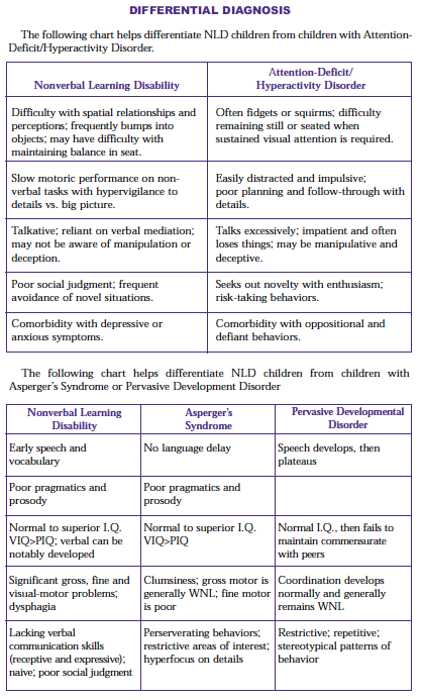
*Click photo to read article
back to top
 What is ADHD?
What is ADHD?
ADHD is a condition of the brain that makes it difficult for children to control their behavior. In ADHD, there are three groups of behavior symptoms: inattention, hyperactivity, and impulsivity. Though all children have occasions when their behavior is uncontrollable, those with ADHD have behavioral problems so frequently that it often interferes with daily life. Effective treatment is available.
Read more about ADHD in the resources below:
New ADHD Guidelines
New Clinical Practice Guidelines: The report, “ADHD: Clinical Practice Guidelines for the Diagnosis, Evaluation and Treatment of Children and Adolescents with Attention-Deficit/Hyperactivity Disorder,” was released Sunday, October 16, 2012 at the AAP National Conference & Exhibition in Boston, and will be published in the November 2011 issue of Pediatrics (published online Oct. 16). The updated guidelines recommend that all patients aged 4 to 18 years old who show symptoms of the condition be evaluated.
2nd Edition of ADHD Toolkit: In addition to the formal recommendations for assessment, diagnosis and treatment of ADHD, the guidelines provide a single algorithm to guide the clinical process. The AAP is also releasing a newly revised and updated ADHD Toolkit to assist health care providers diagnose and treat ADHD in their patients.
Information for Families: To help parents understand the new guidance on ADHD, the AAP has published a detailed and updated consumer resource book entitled “ADHD: What Every Parent Needs to Know.”
LD.org Video: In this "Ask the Experts" video, Dr. Sheldon H. Horowitz debunks common myths about AD/HD, or Attention Deficit/Hyperactivity Disorder, and shares essential facts that viewers should know. Watch video.
back to top
Additional Resources for Educators can be found on the Educators Resource Page. Here you will find Teaching Resources and a listing of four year college programs that have structured learning disabilities services.
If you know of a resource that we don't have listed, please share the information by sending and email to us at info@tsfusa.org. We appreciate your help in making our site a useful resource for people like you!
The Turner Syndrome Foundation, Inc. website(s) is designed for educational purposes only and is not intended to serve as medical advice. The information provided on this site should not be used for diagnosing or treating a health problem or disease. It is not a substitute for professional care. If you have or suspect you may have a health problem, you should consult your health care professional.
Have more questions?
Contact us! |



